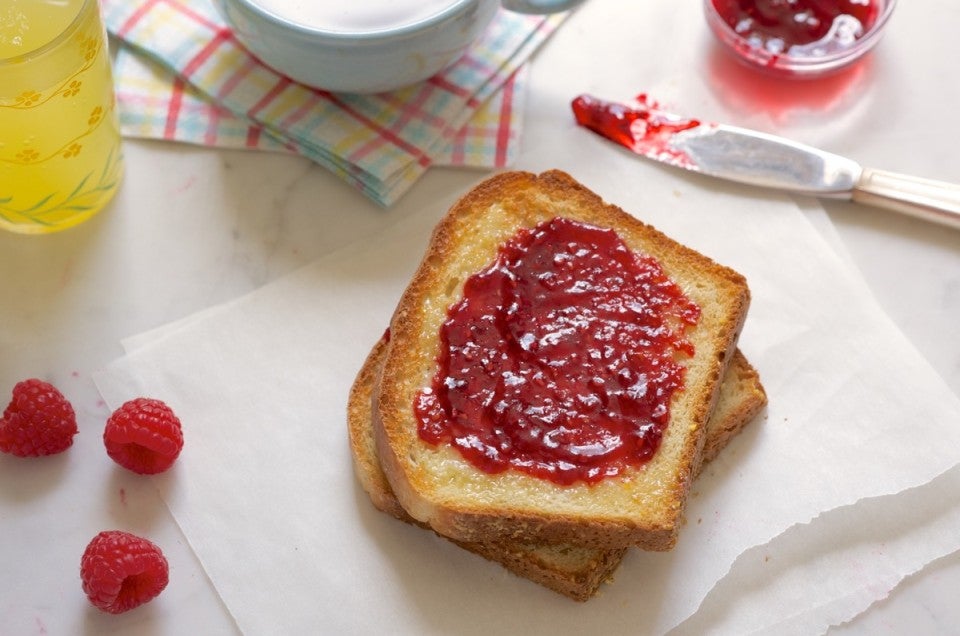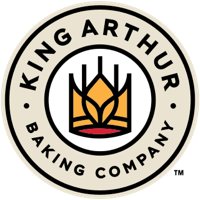


 Love sourdough, but looking for a bit more flexibility and ease when you bake with a starter? In The Casual Sourdough Baker, PJ shows you just how wonderfully stress-free sourdough baking can be, from simple but richly flavored loaves to countless easy ways to use your discard. If you're just beginning your journey, our Sourdough Baking Guide lays out the basics you need for success — whether you decide to become serious or go casual!
Love sourdough, but looking for a bit more flexibility and ease when you bake with a starter? In The Casual Sourdough Baker, PJ shows you just how wonderfully stress-free sourdough baking can be, from simple but richly flavored loaves to countless easy ways to use your discard. If you're just beginning your journey, our Sourdough Baking Guide lays out the basics you need for success — whether you decide to become serious or go casual!
* * *
English Muffin Toasting Bread is one of King Arthur’s most popular bread recipes. It’s simple, easy, and fast: the perfect loaf for a beginning baker or one in a hurry.
But because the bread goes from bowl to oven to table in just about 90 minutes, there’s very little time for it to develop the deep, rich flavor many long-rising yeast loaves offer. It tastes yeasty, for sure, but other than that it’s pretty one-note.
Enter discard starter: you know, that portion of sourdough starter you oh-so-regretfully throw away during the weekly (well, hopefully weekly) feeding process.
Discard starter is simply flour, water, wild yeast, and plenty of sourdough tang, and it deserves a better fate than simply being tossed into the garbage bin or compost heap. So how about if we slip a bit of discard into English Muffin Toasting Bread and see if we can deepen the loaf's flavor?
Fermentation is the traditional method for building yeast bread's flavor profile: the longer the fermentation, the richer the bread tastes. So how do you deepen this bread's flavor without lengthening its fermentation time (rise)? You strike just the right balance of discard starter, yeast, and time.
Here’s what you're going to do to achieve richer taste, a full rise, and still keep the recipe on a short timeframe:
Let’s do this.

*The original recipe calls for baking soda, which could counteract the starter’s nicely acidic tang; substituting baking powder will help retain the starter’s flavor. In addition, since baking powder kicks in first when it's activated by liquid, then again when it meets the oven’s heat, its presence will punch up the bread’s oven spring.

Whisk together the flour, sugar, salt, baking powder, and instant yeast in a large mixing bowl, or the bowl of a stand mixer.
Combine the milk and oil in a separate, microwave-safe bowl (or in a saucepan on the stovetop), and heat to between 120°F and 130°F. Be sure to stir the liquid well before measuring its temperature; you want an accurate reading. If you don't have a thermometer, the liquid will feel uncomfortably hot if you quickly dip your finger into it. Be sure it doesn't reach 140°F, as temperatures in that range can harm the yeast.
Pour the hot liquid over the dry ingredients in the mixing bowl and mix until roughly combined. Stir in the discard starter.
Using an electric beater, or stand mixer with flat beater attachment, beat at high speed for 1 minute; the dough will be smooth and very soft — almost a thick batter rather than dough.
If you don't have an electric mixer, beat by hand for 2 to 3 minutes, or until the dough is smooth and starting to become elastic.

Lightly grease a standard loaf pan (8 1/2" x 4 1/2" x 2 3/4") and sprinkle the bottom and sides with cornmeal.
To tell the truth, I’ve forsaken my standard loaf pan in favor of a taller 9” x 4” x 4” pan; I like the side support it offers rising and baking bread, as well as the straight-sided (rather than mushroom-cap) loaf it produces. But your standard pan will work fine. And if all you have is a quick bread pan (9” x 5”), use it: your bread will simply be wider and shorter.
Scoop the soft dough into the pan, leveling the surface as much as possible. Sprinkle some cornmeal on top, if you like, for more crunch in the crust.
Cover the pan, and let the dough rise for about an hour. For a standard loaf pan, you want it to just barely crown over the rim of the pan. When you look at the rim from eye level, you should see the dough but it shouldn't be more than, say, 1/4" above the rim.
If you're using a 9" x 4" x 4" pan, you want the dough to double in size. You can eyeball doubling, sure; but for any of you out there more comfortable with precision, try this:

Carefully slide a toothpick between dough and pan, note where the dough reaches on the pick, then withdraw the pick and use it to measure how tall the dough is before its rise. Double that number, mark it on the pick, and replace the pick.

When the dough hits the mark on the toothpick, it's doubled. (And no, the rising dough didn't totally carry the toothpick with it! The pick only rose about 1/16".) While the dough is rising, preheat the oven to 400°F.
Bake the risen bread for 22 to 27 minutes, until it's golden brown and its interior temperature is 190°F.
Remove the bread from the oven, and after 5 minutes turn it out of the pan onto a rack to cool. Let the bread cool completely before slicing.
So did we manage to make a tastier English Muffin Toasting Bread without lengthening the process or lowering its rise?
Yes we did! My taste testers enjoyed samples of bread both with and without the addition of discard stater, and unerringly identified the bread with the starter as "[having] slightly more flavor," "more interesting," or "a little bit different and a little bit better."

C'mon, 'fess up; with summer here you've been baking less frequently, and your sourdough starter definitely needs a feed. Feed it now, throw that discard starter into the dough for English Muffin Toasting Bread, and enjoy a hot loaf of tastier toasting bread in just 2 hours!

